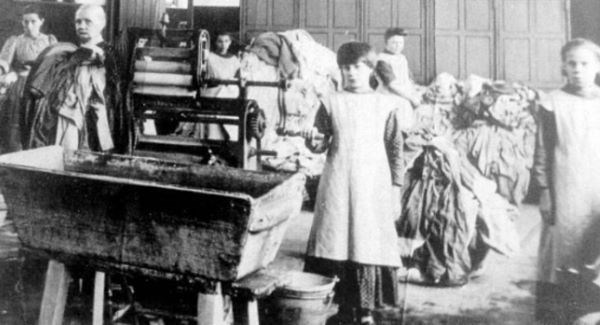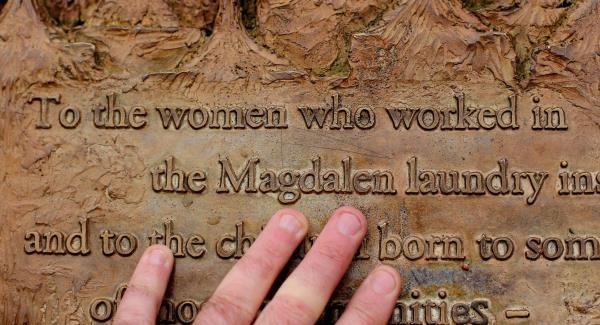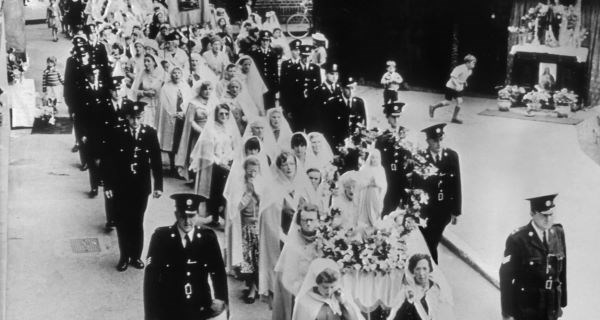Verdict in Magdalene Case May Be Far-reaching
By Conall O Fatharta
This evidence was to become central to the High Court case that followed and the current investigation of the scheme. The three women sought a judicial review of the Ombudsman’s decision and in December 2015, as part of a settlement, the Ombudsman agreed to re-examine the cases. According to the correspondence obtained by the Irish Examiner, within four months, the Ombudsman had changed its position and had formed the view that An Grianan residents should be eligible for the Magdalene redress scheme. This sparked a remarkable nine-month dispute between the Ombudsman and the Department of Justice over the latter’s interpretation of An Grianan and the scheme itself. It ended with the Ombudsman feeling it had no choice but to launch an investigation into whether the scheme has been administered fairly. Remarkably, none of this had been revealed to the two women taking the case against the department or their legal team until last January. The row began in April 2016, when a senior investigator at the Office of the Ombudsman, Tom Morgan, wrote to assistant secretary at the Department of Justice and Equality Jimmy Martin stating that the latter’s decision to refuse a Ms McG access to the scheme “should be reviewed”. He stated this should be done as the department’s assertion that An Grianan was a “specific and separate” institution from High Park laundry that had been dealt with by the Residential Institutions Redress Board (RIRB) was “not supported by the evidence”. “Having considered the facts of this case again, we cannot agree with this contention and do not believe it is supported by the evidence. From the information available, it appears that any division between An Grianan and St Mary’s laundry can only be considered quite artificial and did not reflect the reality of everyday life there,” states the letter. Mr Morgan stated that while alterations were carried out in 1971 partitioning off a second floor of the laundry, this was “not enough to show that separate entity was created”. He also refers to the HSE evidence uncovered by the Irish Examiner in support of this view. “Furthermore, the HSE accepted (in a memo dated June 2012) that St Mary’s and An Grianan were “essentially one and the same”. This would appear to be a reasonable conclusion in view of the fact that the women and girls all shared the same buildings and had to automatically spend a portion of each day working in the St Mary’s laundry, regardless of what part of the building they slept in. Mr Morgan also points out that while the woman (Ms McG) received an award from the RIRB, such women are not excluded from the Magdalene redress scheme. A lengthy response was issued by Mr Martin at the department on May 4, in which he accepts that, as An Grianan was not a separate entity until 1971, Ms McG would be admitted to the scheme. However, he argued that there was “strong evidence” that they were separate institutions by the very fact that it was eligible for the RIRB and those in the laundry were not. He also states that An Grianan was a certified place of detention for remand and probation and was an approved residential childrens home by the Department of Health. “It is clear from 1971 that a newly created unit called An Grianan Training Centre, with its own access was established and more formal education was provided,” he states.
Mr Martin also states that the HSE memo stating that An Grianan and High Park laundry were “one and the same thing” did not “in any way constitute acceptance by the HSE that St Mary’s and An Grianan were one and the same”. “The author of the memo was not in effect in a position, nor do not believe it was the intention of the memo, to establish whether St Mary’s and An Grianan was ‘essentially one and the same’. “He was considering if records relating to An Grianan should be submitted to the McAleese committee.” Mr Martin also took issue with the Ombudsman’s views that women who received a payment under the RIRB could access the scheme pointing out that the terms of reference make it clear that institutions covered under the RIRB are not included in the redress scheme. “If An Grianan was to be included in the scheme it would be necessary to seek a further Government decision on expanding the scheme to include a further institution. We would also need to ask the Government to consider including an institution which was provided for in the Residential Redress Board Scheme resulting in a situation whereby some women will receive double compensation for the same period of time spent in the one institution.” By June, the department had issued the Ombudsman with a document certifying An Grianan as a place of detention in 1971. Mr Martin also supplied correspondence with the Sisters of Our Lady of Charity in 2013 in which they “clearly set out the services they provided in High Park and clearly state that, in 1971, a newly-created unit was established with completely separate living space and its own access which could accommodate 15 girls and was called An Grianan Training Centre”. However, the material was not enough to sway the Ombudsman. In fact, it only confirmed its view that the two institutions remained intrinsically linked post 1972. On June 10, Mr Morgan informs Mr Martin that the Office of the Ombudsman has conducted a review of 30 complaints to its office from women had applied to the scheme and had decided that 13 “warrant further consideration”. Three further cases shared the same characteristics as Ms McG’s case and Mr Martin is advised that they “should be treated accordingly”. “There are another four applicants who resided in An Grianan between 1972 and 1980 and who worked in the laundry. It is our view that the lines between An G and St Mary’s continued to be blurred after 1972 when it was certified as a remand centre. “The Order certifies it as a remand centre for four girls but there were 15 there at any one time. Even the report of the inspection [supplied to the Ombudsman by the Department Of Justice] refers to reserving ‘one bedroom for remand girls accommodating about four’. “It was separate in so far as the sleeping arrangements were concerned but there is no evidence that it was separate in any other real way, such as kitchen, dining room or any other communal areas.” Mr Morgan also points out that the correspondence from the Order themselves in 2013 confirms that girls continued to work in the laundry up to 1980. “As this is a restorative justice scheme, it is our view that the absence of evidence to the contrary, the benefit of the doubt should be afforded to these applicants and these further four complainants should be entitled to redress under the scheme,” he wrote.
The senior investigator also points to two other applications raising a similar issue to An Grianan “in that the institutions may have been one and the same and we intend to consider this further”. “While we have had sight of 30 cases, you will have received a far greater number of applications and we would expect that any applicants who were resident in An Grianan should automatically have their case reviewed. “I should point out that we received a new complaint from an applicant as recently as this week, therefore, we cannot say that this is the totality of cases under consideration by us,” writes Mr Morgan. However, the department refuses to budge on the issue and the following month restates its opinion that that High Park and An Grianan were separate institutions and that any effort to include the latter in the redress scheme would require a decision from Government. By July 15, the Ombudsman’s annoyance becomes clear and the first mention of a possible investigation of the administration of the scheme is mentioned. Mr Morgan points out that no decision of Government is required as all of the women under review by the Ombudsman had worked in one of the 12 listed institutions by dint of the fact they all worked in the High Park laundry. “It is our view that any individual who underwent forced labour at the behest of the State without pay should be entitled to redress under the scheme... While we are of the view that the operation of the scheme itself may show evidence of prima facie maladministration, if it is intended through the Memorandum for Government or otherwise, to interpret the scheme as including these individuals, then we would be satisfied to resolve the complaints on that basis. “If, however, that is not the intention, then we will need to consider whether an investigation into the operation of the scheme is warranted,” states Mr Morgan. However, the threat of an investigation did little to sway the department which asks for any evidence of maladministration to be forwarded on. On September 30, Mr Morgan replies to Mr Martin outlining a case where the Ombudsman felt it was “unclear” why the department relied on a specific date of discharge for a Ms R. “According to correspondence on file, Ms R was admitted to St Mary’s Refuge/An Grianan on xxx. The department has stated that she was discharged on xxx. However, it is not clear from an examination of the file, why this date was chosen as other possible dates of discharge are also referred to in correspondence. Ms R has stated that she did not leave An Grianan until around xxx. “The amended social insurance record, as provided by the Department of Social Protection, shows a date of entry into insurable employment as 1981/82. In light of this, and in the apparent absence of any other independent evidence, it is our view that Ms R’s testimony in this regard should be accepted.”. Mr Morgan states that the above amounted to “prima facie evidence” that the decision to refuse Ms R’s application for the whole of the period she worked there “may have been taken on irrelevant grounds, based on erroneous or incomplete information, improperly discriminatory and otherwise contrary to fair or sound administration”. By October 21 last, relations between the two parties deteriorated further with the Ombudsman unhappy that the department’s responses go “back over old ground hat has already been covered and makes general assertions that do not adequately address the specific facts and issues raised in the above cases”. Mr Morgan again states that if the department is not willing to review the cases of women who worked in An Grianan up until 1980 “the Ombudsman will have no alternative but to institute an investigation encompassing the outstanding cases”. On November 3, Mr Martin informs the Ombudsman’s office that it had sought the advice of the Attorney General on the matter and simply wished to “reiterate” what had previously been argued in relation to the status of An Grianan. Mr Martin also states that it is the view of the department that the Ombudsman is acting outside of its remit, as including residents of An Grianan to the redress scheme amounts to adding an institution to the scheme. “It is our understanding that the Ombudsman’s jurisdiction is confined under section 4 of the Ombudsman Act 1980 (as amended) to the examination of the administration of scheme such as the Magdalene Laundries Restorative Justice Ex Gratia Scheme and that the Ombudsman does not have jurisdiction to engage in matters of policy. “It is our view that any suggestion to nominate new institutions or to change the nature or scope of the scheme is to question the underlying policy and is ultra vires the Ombudsman’s role under the Act.” On December 9, Mr Morgan informs Mr Martin that the Ombudsman is launching an investigation into the scheme. This was formally issued by Ombudsman Peter Tyndall to secretary general of the Department of Justice Noel Waters. Mr Tyndall stated the investigation would examine whether the application process operated in a clear, open, fair and consistent manner; whether the Department relied on irrelevant and/or incomplete information when deciding on a person’s eligibility under the scheme and the various practices of the department in sourcing, gathering and evaluating information on the institutions covered by the scheme.
|
.
Any original material on these pages is copyright © BishopAccountability.org 2004. Reproduce freely with attribution.


